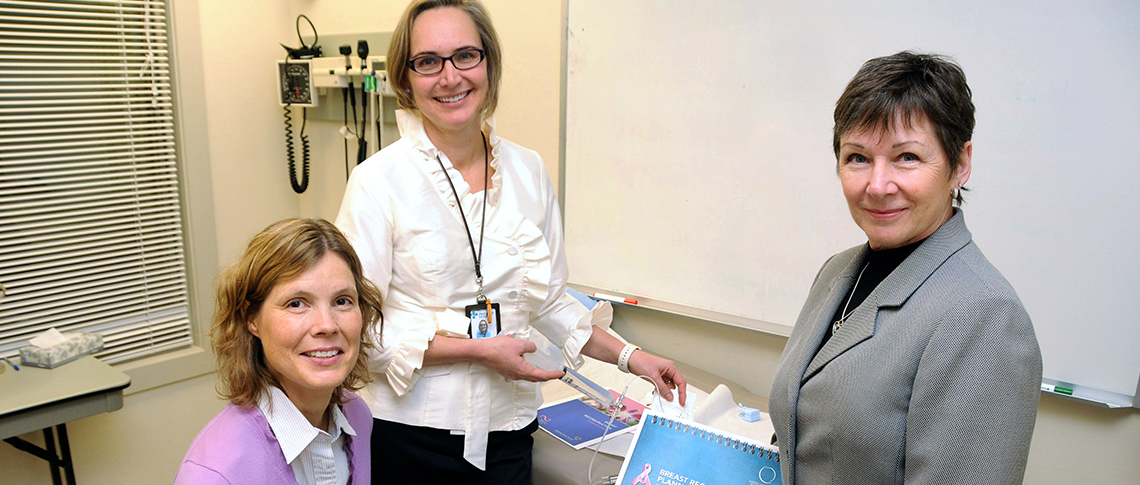
November 23, 2015

Dr. Claire Temple-Oberle is flanked by patients Kirsten Boulay, left, and Glenda Bonney who have benefitted from a new AHS program that speeds recovery from surgery.
Story by Greg Harris; Photo / Video by Paul Rotzinger
When Calgary resident Kirsten Boulay told her friends she would be going home from the hospital the same day as her double mastectomy and breast reconstruction, her friends could scarcely believe her.
“But I had a lot of confidence in my surgeons,” Boulay says.
“I feel so fortunate to have been in a place that has a focus on patient recovery.”
Boulay is among the many mastectomy and breast reconstruction patients in Calgary who are leaving hospital sooner with the expansion of a program that offers a new way of caring for surgical patients.
Enhanced Recovery After Surgery (ERAS) is a set of practices before, during and after surgery that’s helping patients feel better faster while shortening hospital stays. It was first introduced at two hospitals in Alberta in 2013 for patients undergoing colorectal surgery.
Although she did experience some nausea when she woke up, Boulay says it was nowhere near as severe as what she had experienced in previous surgeries.
“Being at home is a more comforting and restful place to be,” Boulay says. “It allows you to physically and mentally move forward with your recovery.”
Dr. Claire Temple-Oberle is the surgeon who has introduced ERAS guidelines to mastectomy and breast reconstruction patients in Calgary.
“Patients I recommend for surgery using ERAS are initially surprised when I tell them they’ll be going home the same day,” says Dr. Temple-Oberle, who specializes in breast reconstruction using implants. “But they experience less nausea, are able to eat sooner, have less pain, and they sleep better by returning to their homes and families.”
A pilot study involving 29 of Dr. Temple-Oberle’s breast reconstruction patients showed there was no increase in post-operative complications using the ERAS protocols and same-day discharge. Without ERAS, those patients would have been hospitalized overnight.
A second and more involved type of breast reconstruction that uses abdominal tissue is also showing good results using ERAS, with time spent in hospital shortened from roughly seven days to five days on average.
Glenda Bonney underwent the more extensive reconstruction with abdominal tissue and says she experienced hardly any nausea after an eight-hour surgery.
“The level of care was just incredible,” Bonney says. “I did not experience anywhere near the level of pain other people who had been through the same surgery told me I could expect.”
With ERAS, patients receive anti-nausea and anti-inflammatory medications before surgery, and then different types of anesthetics and pain medications both during and after the surgery. By minimizing the use of narcotics, doctors are often able to prevent post-operative nausea.
There are more than 350 mastectomies and breast reconstructions performed every year at Foothills Medical Centre. Using ERAS for this patient population is currently only being piloted in Calgary.
Jeannette Lawrence, the AHS lead for ERAS, says planning is underway to ensure the ERAS pathway can be offered to breast reconstruction patients across the province. According to estimates, provincewide adoption of the program could free up 1,600 bed days per year, improving access for Albertans who need inpatient care.